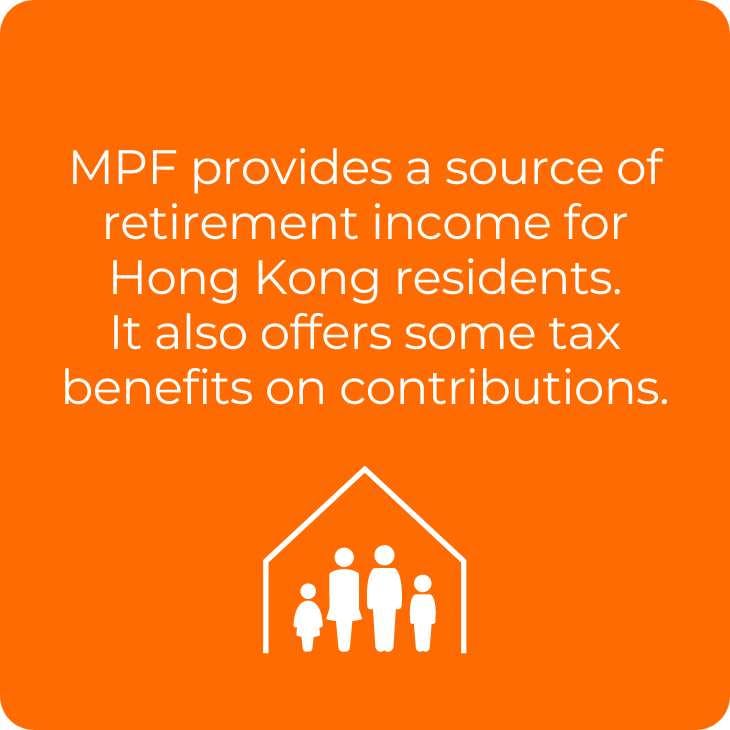MPF stands for Mandatory Provident Fund, a retirement savings scheme introduced by the Hong Kong government in 2000.
It ensures employees and self-employed persons save a portion of their income for retirement.
Certain groups are exempt, such as civil servants, expatriates working for short periods, and domestic employees.
Both employers and employees contribute to the MPF. The standard contribution rate is 5% of the employee’s income. Minimum and maximum income levels determine specific contribution amounts.
One of the perks of being an employee or a self-employed person is the fixed income you receive daily, weekly, or monthly.
You can always plan your finances and easily take out loans and mortgages based on your earnings for capital-intensive projects.
But what happens when you can no longer work to earn a living?
How do you ensure that you live comfortably after retirement?
Keep reading to find out all you need to know about the Mandatory Provident Fund in Hong Kong .
What Is MPF?
The MPF is a compulsory, privately managed retirement savings system to make sure that individuals have financial resources after leaving the workforce.
Contributions made during your working years accumulate over time, providing retirement income or early access under specific circumstances.
The system is tailored to accommodate various employment arrangements, offering different types of schemes based on company size, industry, and employment type.
MPF Fund Types & Investment Choices
There are three types of MPF schemes in Hong Kong: Master Trust Schemes, Employer-Sponsored Schemes, and Industry Schemes. Here’s how they compare:
| Scheme Type | Who Can Join? | Best For | Key Benefit |
|---|---|---|---|
| Master Trust Schemes | Employees, self-employed individuals, and those transferring from other MPF schemes | Small & medium-sized businesses | Lower fees due to pooled funds |
| Employer-Sponsored Schemes | Employees of a single employer and its associated companies | Large corporations | Cost-effective for big businesses |
| Industry Schemes | Employees in catering & construction industries | High-turnover jobs, casual workers | No need to change MPF when switching jobs in the same industry |
Who Needs MPF in Hong Kong?
In Hong Kong, MPF is mandatory for employees and self-employed individuals between the ages of 18 and 64, with a few exceptions. Most workers must contribute, but certain groups are exempt based on their job type, pension coverage, or employment duration.
Who Is Exempt from MPF Contributions?
Persons exempted from remitting funds to the Mandatory Provident Fund in Hong Kong are:
- Civil servants, judicial officers, teachers in grant schools, and other individuals covered by provident fund schemes or statutory pensions
- Members of occupational retirement schemes regulated under the Occupational Retirement Schemes Ordinance (“ORSO”)
- Expatriates employed in Hong Kong or self-employed in Hong Kong for not more than 13 months
- Expatriates who are members of foreign retirement schemes
- Employees of the European Union Office of the European Commission in Hong Kong
- Domestic employees
- Self-employed hawkers
- Persons employed for less than 60 days, excluding casual employees

Who Contributes to the MPF, and What Is the MPF Contribution Rate?
All employers, employees, and self-employed persons who are not exempt must contribute to the Mandatory Provident Fund (MPF) at a fixed rate.
Contributions are calculated based on an employee’s relevant income, with minimum and maximum income levels as follows:
- Minimum relevant income: HKD 7,100 per month (or HKD 280 per day for daily-paid employees).
- Maximum relevant income: HKD 30,000 per month (or HKD 1,000 per day for daily-paid employees).
MPF Contributions for Employees
| Monthly Relevant Income (HKD) | Employer’s Contribution (HKD) | Employee’s Contribution (HKD) |
|---|---|---|
| Less than 7,100 | Relevant income × 5% | Not required |
| 7,100 – 30,000 | Relevant income × 5% | Relevant income × 5% |
| More than 30,000 | 1,500 | 1,500 |
- If an employee earns less than HKD 7,100 per month, they don’t need to contribute, but the employer must still contribute 5% of their salary.
- If an employee earns between HKD 7,100 and HKD 30,000, both the employer and employee contribute 5% of the salary.
- If an employee earns more than HKD 30,000, the contribution is capped at HKD 1,500 for both employer and employee.
MPF Contributions for Non-Monthly Paid Employees
| Daily Relevant Income (HKD) | Employer’s Contribution (HKD) | Employee’s Contribution (HKD) |
|---|---|---|
| Less than 280 per day | Relevant income × 5% | Not required |
| 280 – 1,000 per day | Relevant income × 5% | Relevant income × 5% |
| More than 1,000 per day | 1,000 × 5% | 1,000 × 5% |
MPF Contributions for Self-Employed Persons (SEPs)
Self-employed individuals must contribute 5% of their relevant income, following these thresholds:
| Relevant Income (HKD) | Mandatory Contribution (HKD) |
|---|---|
| Less than 7,100 per month (or 85,200 per year) | Not required |
| 7,100 – 30,000 per month (or 85,200 – 360,000 per year) | Relevant income × 5% |
| More than 30,000 per month (or 360,000 per year) | 1,500 per month (or 18,000 per year) |
Self-employed persons can choose to contribute monthly or annually, depending on their preference.
MPF contributions are based on relevant income, which includes:
- Salary, wages, commissions, bonuses, and gratuities
- Paid leave allowances (e.g., annual leave, sick leave, and compassionate leave)
- Cash allowances (e.g., housing, transportation, and meal allowances)
- Employer-collected tips and service charges
Tax Deductions on MPF Contributions
MPF contributions reduce taxable income for both employers and employees:
- Employees can claim a tax deduction of up to HKD 18,000 per year for MPF contributions.
- Employers can deduct up to 15% of an employee’s annual income for MPF contributions.
Taking advantage of these deductions helps reduce tax liability while securing retirement savings.
When Do Employees Start Making MPF Contributions?
Employees don’t start contributing to MPF immediately. There’s a 60-day contribution holiday for new hires.
Your first MPF contribution is due after 60 days of employment. Employers must submit it to the trustee by the 10th day of the following month after the 60th day.
Example: If your 60th day falls in March, your employer must make the first contribution by April 10.
After the first payment, contributions must continue monthly by the 10th of each month.
Can You Withdraw Your Entitlement from the MPF Before Retirement?
While MPF in Hong Kong is a great initiative that encourages saving and planning for the future, certain incidents may occur, making it pertinent to withdraw one's accrued benefits under the scheme.
Hence, you may be wondering what it takes to withdraw your accrued benefits.
Generally, you'll not be eligible to withdraw your funds until you reach the retirement age of 65.
However, you can withdraw the funds before retirement in any of the following instances:
- If you retire at age 60
- If you're leaving Hong Kong permanently
- If you become totally incapacitated or suffer from a terminal illness
- If you have a balance of $5,000 or less in the scheme and no contributions for 12+ months
Why Do You Need It?
If you're looking for a convenient way to save for the future, you need the MPF.
The MPF ensures that you enjoy the standard of living you were accustomed to while working when you stop working.
The MPF is also beneficial for the following reasons:
Reduced Tax Liability
The MPF reduces your tax burden as your mandatory contribution will be deducted when calculating your taxable income.
You'll also not be liable to pay tax on the lump sum and monthly payments you receive as your entitlement.
Low-risk Assets
Investing part of your salary may seem like a viable alternative to the MPF, and higher returns are possible with such investments.
However, the MPF is ideal if you're risk-averse or looking for a low-risk investment for your retirement savings.
The law requires each MPF scheme to maintain a capital preservation fund that will be invested in low-risk assets like bank deposits and money market instruments.
Safety
Retirement savings are meant to meet future financial needs. Thus, it's important to ensure the safety of such retirement funds.
The MPF system is a secure contribution fund. Several mechanisms have been put in place to ensure the protection of the funds.
For instance, the law requires that all Mandatory Provident Fund Schemes be maintained by MPF trustees.
Qualified custodians, which are often authorized financial institutions, are also appointed as custodians. It's highly regulated.
MPF for Employers in Hong Kong
The Mandatory Provident Fund (MPF) is a government-backed retirement savings scheme that all employers in Hong Kong are required to provide for their employees. This includes enrolling each employee, arranging payroll disbursements to include MPF contributions, and ensuring ongoing compliance.
While the MPF helps ensure financial security in retirement, managing it can be a hassle, especially for new businesses. Non-compliance can lead to penalties, so it’s essential to get it right from the start.
Open your company in Hong Kong with Air Corporate, and we’ll handle your MPF setup and ongoing contributions, giving you peace of mind from day one.



